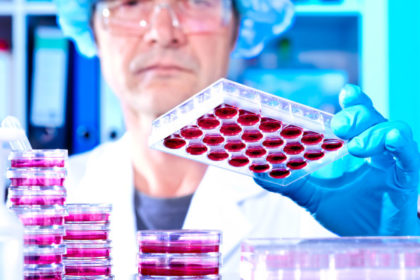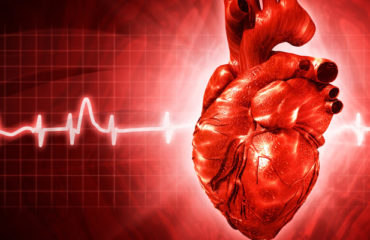
 Stem cells offer great potential for use in clinical applications thanks to their ability to specialize into different cell types and to renew themselves. Although some of them have limitations, stem cells are still an amazing resource for the medical world, as no other cell inside the human body has the ability to generate new cell types with a more specific function that the source.
Stem cells offer great potential for use in clinical applications thanks to their ability to specialize into different cell types and to renew themselves. Although some of them have limitations, stem cells are still an amazing resource for the medical world, as no other cell inside the human body has the ability to generate new cell types with a more specific function that the source.
Stem cells can be considered the body’s raw building blocks, as all the other cells with specialized functions result from stem cells that divide and give birth to daughter cells. These cells, at their turn, divide or differentiate and become specialized, giving birth to muscle, bone, blood, brain or other specific cell types.
The characteristics and applications of stem cells vary not only depending on the type of cells they differentiate into, but also on the nature of the tissue they are derived from. From this point of view, stem cells can be classified into three main groups: embryonic, adult and induced pluripotent stem cells.
Types of stem cells depending on origin
Embryonic stem cells (ESCs) come from embryos of up to 5 days old, and are pluripotent, meaning that they can divide into several stem cells and specialize into any type of cell. This property allows embryonic stem cells to repair damaged tissues and organs and to stimulate the regeneration of diseased tissues. Researchers can grow and induce the differentiation of ESCs in the lab, but the use of embryonic stem cells is often avoided due to ethical considerations.
Adult stem cells, the second type, are found in adult tissues inside the human body and they can also differentiate into various cell types, but their ability to give birth to new cells is limited. Although until recently it’s been thought that an adult stem cells can only differentiate into the same type of cell as the tissue it comes from, emerging studies suggest that these cells, just like ESCs, can create unrelated cell types.
In other words, just like an embryonic stem cell derived from bone marrow can give birth to liver or muscle cells, adult stem cells taken from bone marrow can create bone or skin cells. There’s a limit though, as adult stem cells can’t be manipulated as efficiently as ESCs, and they’re not as versatile and the ones derived from embryos.
The third type of stem cells is somewhere in between the adult and embryonic stem cells, and it’s called induced pluripotent stem cells (iPSCs). These are highly versatile, similarly to ESCs, but are made from adult specialized cells through laboratory techniques (genetic reprogramming). iPSCs have two main advantages: first one’s that they do not create any ethical debate, as they don’t come from embryos, and the second one is that the risk of rejection is lower than in adult stem cells, thanks to the fact that iPSCs are reprogrammed to act as ESCs.
Current applications of stem cells by type
We won’t discuss the ESCs here as the tendency is to not use embryonic stem cells, and opt for adult or induced pluripotent stem cells instead.
Perhaps the most used of all adult stem cells are those obtained from the bone marrow (mesenchymal stem cells), which can be differentiated into bone, cartilage and fat cells, and can encourage the production of new blood cells. These were not proven to be able to differentiate in any type of cell inside the human body, but existing research suggests mesenchymal stem cells may be useful in bone and cartilage repair or blood vessel repair after a heart attack [5].
In lab studies, bone marrow stem cells from adult rats were able to partially regrow the damaged liver, and to have beneficial effects when injected into the damaged heart. Also, scientists at the Children’s Hospital Boston have found adult bone marrow stem cells to protect against chronic lung disease [2] in mice models.
Induced pluripotent stem cells have also been tested for their ability to differentiate, and lab results showed that iPSCs made from skin samples may be useful in treating neurological disorders like Parkinson’s disease or Down’s syndrome [8].
Researchers in Japan managed to generate human liver buds from induced pluripotent stem cells, the scientists using three different types of stem cells for this purpose: part of them were hepatocytes coaxed from iPSCs, others were endothelial stem cells and others were mesenchymal stem cells. The liver buds were grown in vitro for a few days then transplanted to mice, where they quickly connected with the blood vessels and continued to grow.
Other studies have shown that iPSCs grown from embryonic cord-blood cells can be used for repairing the damaged retina of mice and regrowing the vascular vessels. Scientists from the Japan Ministry Health are currently conducting a clinical trial using autologous iPSCs in six patients affected by age-related macular degeneration. IPSCs used for this trial are derived from skin cells, and reprogrammed to differentiate into retinal pigment epithelial cells.
Adult stem cells have been used in treating leukemia and blood or bone related cancers utilizing bone marrow transplants [1]; mesenchymal stem cells have been shown to help in repairing the damaged cartilage in patients with articular cartilage defects [3] and to improve the outcome in spinal cord injuries [4]. Peripheral vascular disease [6] and liver cirrhosis [7] may also be treatable with adult stem cells.
Although adult stem cells and iPSCs can be differentiated in a wider variety of cells, not all of them have been tested in human subjects, one of the biggest barriers being the potential immunological rejection.
References
[1] http://en.wikipedia.org/wiki/Adult_stem_cell
[2] http://www.childrenshospital.org/news-and-events/2009/december-2009/bone-marrow-stem-cells-may-prevent-chronic-lung-disease
[3] http://www.ncbi.nlm.nih.gov/pubmed/18038395
[4] http://www.pubstemcell.com/monthly/006030700113.htm
[5] http://stemcells.nih.gov/info/scireport/pages/chapter9.aspx
[6] http://www.ncbi.nlm.nih.gov/pubmed/21671823
[7] http://www.ncbi.nlm.nih.gov/pubmed/16778155
[8] http://www.eurostemcell.org/factsheet/stem-cell-research-therapy-types-stem-cells-and-their-current-uses#iPS



